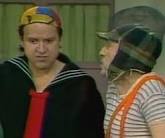|
Piwin -> RE: Approaches to learning the fretboard (May 5 2016 22:18:00)
|
I think working with scales makes more sense than doing it string by string.
I started out learning the interval patterns for a scale (like wwhwwwh) off the guitar, just learning it by heart.
While doing that I'd play around the neck with certain intervals (like playing only whole steps, looking at all the possible variations to play that interval from one string to the next one, skipping strings, etc. then the same with half tone)
Once comfortable with that, I'd pick any note at random, with any finger, anywhere on the fretboard, and work how to play the scale I was trying to learn from there. It's a pain at first, but working it out on your own is always profitable in the end (like working out a piece by ear instead of dowloading the tab. always worth it in the end) I found it was a good way of not getting stuck with patterns. Though by doing it that way, you're actually reasoning in terms of scale degrees and not so much in terms of the actual notes. Though once you're comfortable with the scale degrees, adding the exact name of the note you're playing isn't difficult, provided you know the name of the root note. Working in terms of scale degrees also teaches you very easily what to call accidental notes (i.e. is it G flat of F sharp? etc.).
Also, as was mentioned previously, singing out the names of the notes always helps.
|
|
|
|

